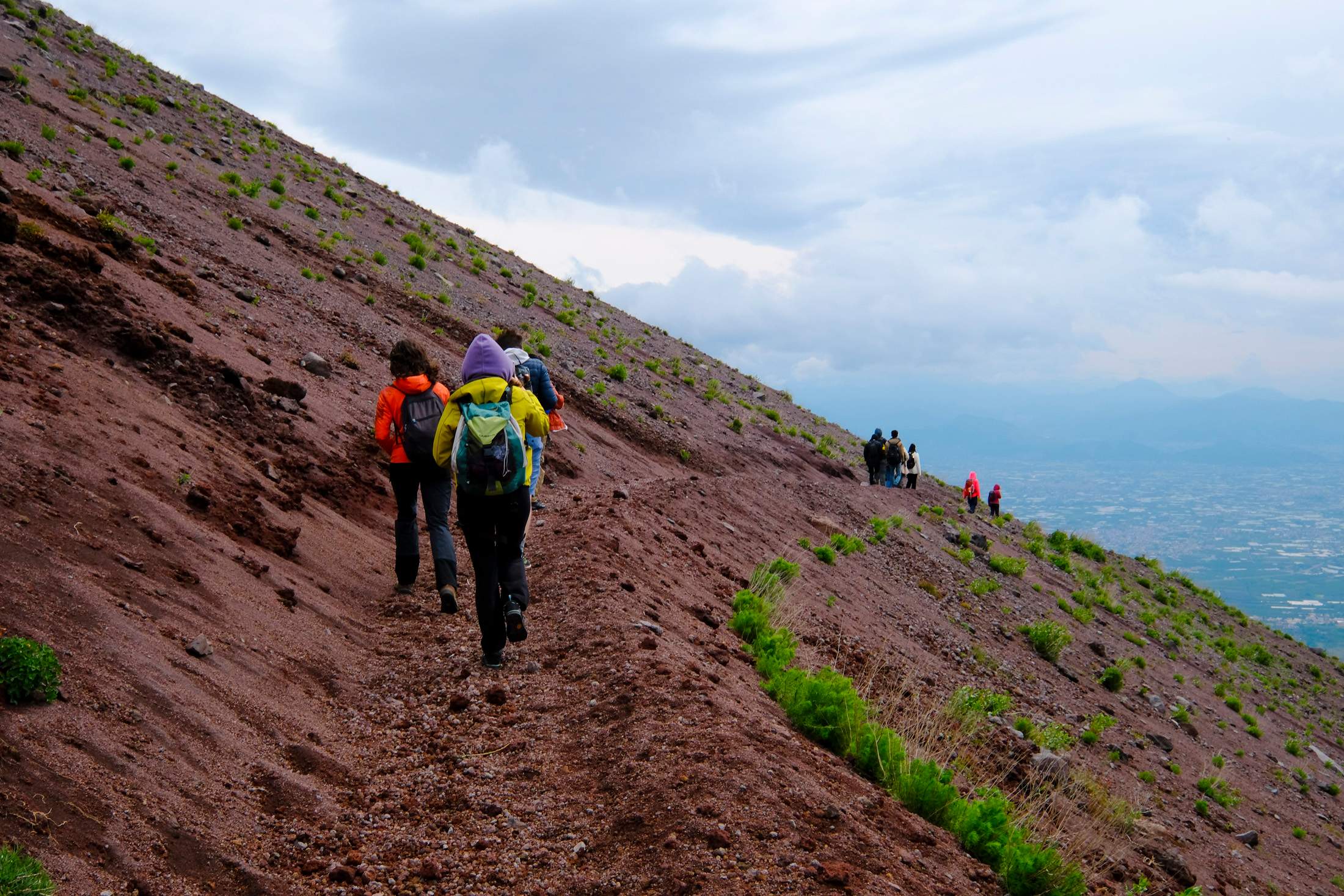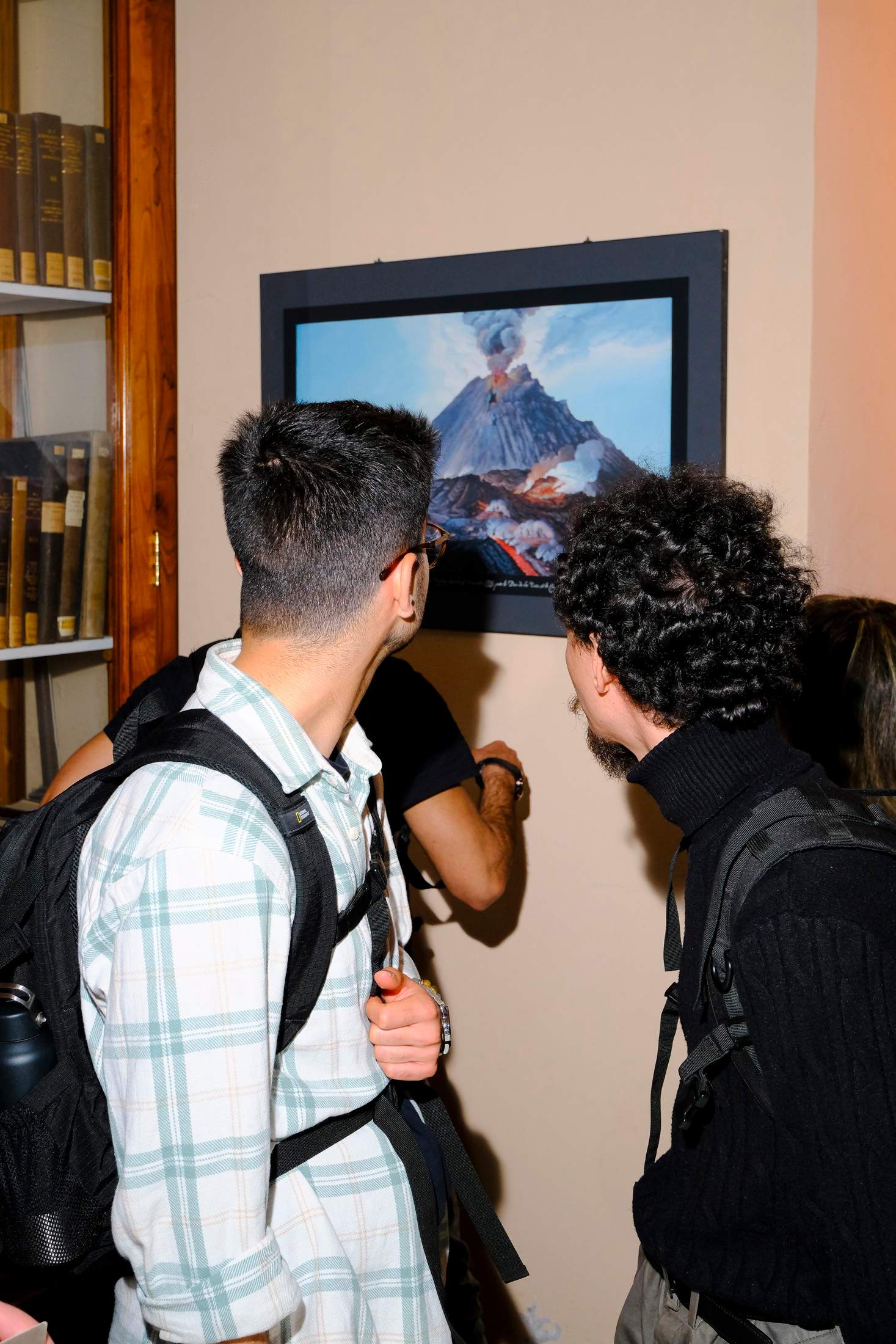Volcano hunting / Naples
Lava Stories
Students eye up potential eruptions on a ground-breaking new course.
“Today the volcano is quite calm,” says Paola Petrosino, as smoky wisps of water vapour seep from rocks behind her. “It’s in a phase of dormancy but it’s active.” We’re inside Vesuvius National Park, looking down at the crater created when Vesuvius last blew its top in 1944. Petrosino is speaking to her assembled group of students. Below us, Naples sprawls to the edge of the Tyrrhenian Sea.

Petrosino is a professor at the southern Italian city’s Università degli Studi di Napoli Federico II, an institution that dates back to the 13th century. The university recently launched a two-year master’s programme in volcanology, thought to be the world’s first degree of its kind.

An intake of 15 mostly international students is being taught in English in a city that knows what it’s talking about when it comes to volcanoes. Alongside Vesuvius, across the bay is the volcanic island of Ischia. To our west, we can see an area stretching for more than 12km known as the Campi Flegrei, one of the planet’s most active calderas, the name given to basin-like volcanic depressions. With no visible cone at Flegrei, volcanologists are crucial to working out where the next eruption could come from – one that could consume the city of Naples.

The master’s course touches on everything from geophysics to geology and equips students with the tools to become expert volcano observers, thanks to teaching by researchers from the Vesuvius Observatory, known as ingv-ov, the world’s oldest monitoring station. The course has lured volcano enthusiasts from across the globe, from Rwanda to Iran.
Student Launcelot Deschamps picks up a rock and studies it with a pocket magnifying glass, identifying it as containing a mineral called clinopyroxene. Deschamps, who was raised on the volcanic French island of La Réunion in the Indian Ocean, says that Naples is a great place to be a young person. “After this, I would either like to do a doctorate or work at the Vesuvius Observatory,” he says.
There are other students who, like Deschamps, have grown up in volcanic landscapes, such as Carmen Cano from Tenerife. But not everyone is motivated by a personal connection to such landscapes. German Dorothea Jester was a civil servant before discovering a love for geology. Nigeria’s Ifeoma Aghaebita says that she got into volcanoes after watching documentaries. Rwandan Aline Azabayo says that it was a visit to Mount Nyiragongo, over the border in the drc, that inspired her.
After studying the park’s lava flows and lichen growth, we snake our way down Vesuvius to the minibus. The rest of the day involves visiting the old Vesuvius observatory, which was founded in 1841 and is now a museum, and a final stop at the current control centre, which monitors Naples’ three volcanoes, as well as Stromboli further south. Operating 24 hours a day all year and crammed with more than 35 screens, it’s a place where every student will do work experience in the second year of their course. Some might end up working here. “The Campi Flegrei is Europe’s most active caldera and in a densely populated area,” says Turkish student Yigit Ercan. “Given Naples’ trade and tourism, if there’s an eruption here, it will affect the whole world.” You know who to call. —


